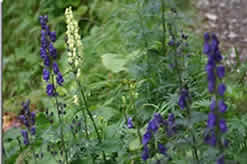
Aconite, thung, leopard's bane monkshood, wolfsbane, women's bane, blue rocket, Devil's helmet
Aconite is a herbaceous perennial plant that is extremely poisonous. Aconite has long been used to poison arrow tips thus it is believed where its name was derived from the Greek word ”Akontion meaning “dart”. Aconite is native to the mountainous parts of the northern hemisphere, growing in rocky and cliffy glens.
Aconite is an erect plant that grows to about 3 feet in height. The most poisonous part is the roots that is fleshy and spindle shaped. The Aconite leaves are deep green in color, with alternating spiral arrangement. Aconite flowers bloom in erect clusters of dark purple blue in color. The aconite flower has a peculiar shape where one of its 5 sepals resembles a cylindrical hood or a helmet thus its other English names were derived. Aconite fruit is a follicle that bears a lot of seeds.
Aconite has been widely used in traditional medicine and Homeopathic medicine. there a number of health benefits and medicinal usages for aconite, among which are as follows:
Sedative. Aconite is known for its sedative property and is being used in treating insomnia, agitation, anxiety, trauma and head ache.
Eyes and ears problems. Aconite is traditionally used to treat various problems related to eyes and ears.
Facial paralysis. Aconite has been used to rehabilitated facial paralysis.
Heart rate modulator. Aconite can affect the heart rate thus it is used to regulate as such.
Blood pressure regulator. Aconite also affects the blood pressure and is used to lower blood pressure.
Fever. Aconite has antipyretic property that is effective in treating fever.
Can stimulate sweating. Aconite has a diaphoretic action which induce sweating.
Respiratory condition. Aconite has been used to treat asthma, bronchitis, pneumonia and other breathing disorders. It is also used as a decongestant.
Measles. Aconite has been used for the treatment of measles.
Disinfectant. Aconite has been used to treat wounds and bruises where it is thought to prevent infection.
Anti-inflammatory and Pain reliever. Aconite is also used to treat muscle and joint pains that include arthritis, gout, rheumatism and headache. It is also used to treat nerve pains such as neuralgia and scatica.
Diarrhea. Aconite is used to treat loose bowel movement.
Diuretic. It has diuretic activity that promotes urination that helps to purge toxins from the body.
Infertility. Aconite is also believed to promote fertility in men and women.
Hypothermia. Aconite has been used to curb hypothermia, counters the feeling of numbness for hands and feet and chilliness brought about by climatic chages.
Hair loss. Aconite is also used to counter baldness and hair loss.
Antioxidant and free radical scavenging activity of flavonol glycosides from different Aconitum species
A study published in teh Journal of Ethnopharmacology reported the bioassay-guided fractionation by 1,1-diphenyl-2-dipicrylhydrazyl (DPPH) radical scavenging test of polar extracts of some Italian Aconitum species (A. napellus subsp. tauricum, A. napellus subsp. The investigation showed that 5 is the most active compound in the DPPH free-radical scavenging test (IC50 1.9 μM) while in the coupled oxidation of β-carotene and linoleic acid assay compound 1 has the highest inhibitory ratio after 1 h (58.9%). Some structure–activity relationships on the AA were obtained. http://www.sciencedirect.com/science/article/pii/S0378874103000436
Mechanisms of hypoglycemic activity of Aconitan A, a glycan from Aconitum carmichaeli roots
Aconitan A did not affect plasma insulin levels in normal, glucose-loaded and alloxan-induced hyperglycemic mice and gave no influence on insulin binding to isolated adipocytes. Aconitan A exerted no effect on the activities of hepatic hexokinase, glucokinase, glucose-6-phosphatase and glucose-6-phosphate dehydrogenase, whereas it significantly increased hepatic phosphofructokinase activity. Although the activity of hepatic glycogen synthetase showed a tendency to increase, the activity of liver phosphorylase and glycogen content were unchanged by aconitan A. Aconitan A did not change the total cholesterol and triglyceride contents of plasma and liver. http://www.sciencedirect.com/science/article/pii/0378874189900354
Anti-inflammatory Principles of Aconitum Roots.
A study published in the Journal of Pharmacobio-Dynamics Vol. 3 (1980), investigated the methanol extracts of Aconitum roots on its inhibition of increased vascular permeability induced by acetic acid and of hind paw edema produced by carrageenin in mice. Results showed that the aconitines and benzoylaconines have inhibited the increased vascular permeability induced by acetic acid in mouse peritoneal cavity and that induced by histamine in rat intradermal sites, and the hind paw edema formation induced by carrageenin in rats and mice at low doses. This results suggests that the methanol extract of Aconitum roots has anti-inflammatory properties. https://www.jstage.jst.go.jp/article/bpb1978/3/10/3_10_514/_article
Aconite must only be used in detoxified form. Aconite preparations are available at Chinese pharmacies, or in minute homeopathic doses..
Aconite is available as a
Aconite may also be bought in online stores such as Amazon where it listed : Hyland's Aconitum Napellus.
Poisonous. Aconite if taken at large dosage can be poisonous and fatal. Should only be taken under expert supervision.
Other side effects main include abnormal heart beat, nausea, vomiting, respiratory rroblems.
Pregnancy and Breast feeding. There is no sufficient studies done to investigate the adverse or side effects of Aconite consumption during pregnancy and breast feeding. Avoid its use even for external use.
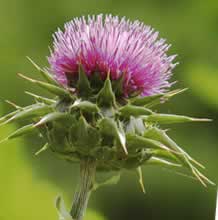 Silymarin extract still tops in liver protection
Silymarin extract still tops in liver protection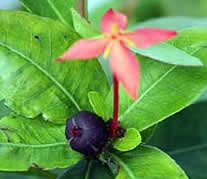 Santan Flower has wound healing properties
Santan Flower has wound healing properties 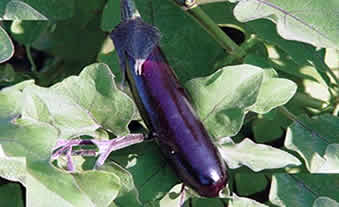 Antioxidant properties from Talong
Antioxidant properties from Talong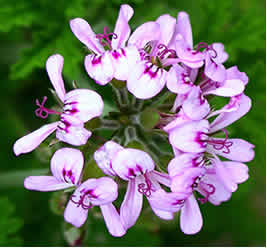 Malvarosa Plant found to have antioxidant properties
Malvarosa Plant found to have antioxidant properties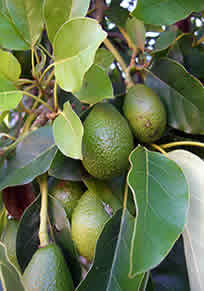 Anti-cancer properties of Avocado fruit
Anti-cancer properties of Avocado fruit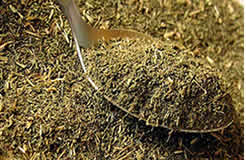 Stevia use can cause cancer, studies suggests
Stevia use can cause cancer, studies suggestsArticle last reviewed: 10.25.2016